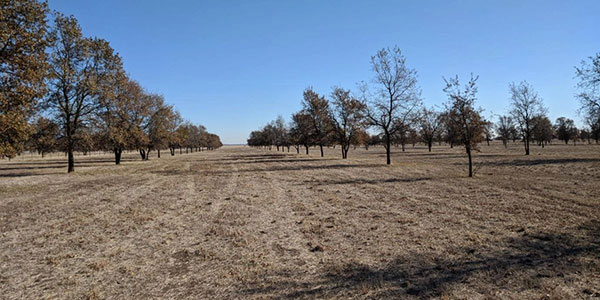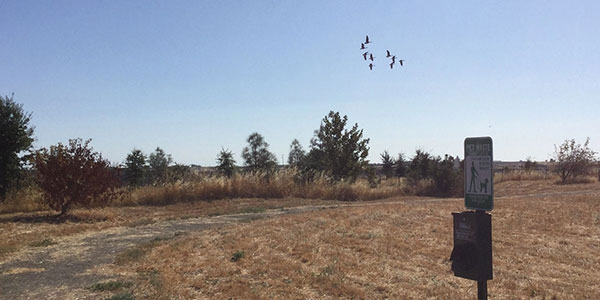Can I bring my dog to the Nature Preserve?
The short answer is no. The Cache Creek Nature Preserve is designed to provide a safe haven for wildlife in an increasingly urbanized world, mitigating the effects of associated habitat loss. Part of that mitigation is to reduce interaction with domesticated pets, primarily dogs.
Don’t get us wrong, we love dogs too! There is a time and a place for dogs in the wildlands, usually working dogs like the search-and-rescue dogs in the banner photo. The impacts dogs can have on wildlife are listed below, and please understand the Nature Preserve’s restriction about dogs is for your dog’s benefit too. If your dog isn’t used to the wildlife, it could have an unpleasant interaction with the snakes, ticks, and other animals like skunks that call the Nature Preserve home. If you love your dog, please don’t bring it here to the Nature Preserve.
Even though dogs are not allowed at the Nature Preserve, we also recognize space for our best friends is vital and would like to assist you with finding recreational spaces to enjoy with your pooch. Scroll down to see two Yolo County parks where dogs are welcome to visit.
Impacts of Dogs on Wildlife
Physical Displacement
Reptiles, waterfowl, songbirds, rabbits, deer, and bobcats change their path and patterns to avoid areas where dogs, perceived as predators, are detected. This includes smelling left behind urine or feces after a dog is no longer present.
Temporal Displacement
Wildlife has also been shown to change daily habits such as inverting day and night activity in order to be less active when dogs are present and to increase activity when dogs are absent.
Disturbance and Stress Response
Wildlife perceives dogs as predators and is more alert when they are present, causing stress hormone levels to elevate in wildlife. This can have long-term impacts such as reduced reproduction, growth, and compromised immune systems.
Indirect Mortality
Dogs cause death by transmitting deadly diseases including rabies, giardia, distemper, parvovirus, and toxoplasmosis. Additionally, wildlife can transmit diseases to domestic animals.
Direct Mortality
Dogs can chase and kill wildlife species such as fish, reptiles, amphibians, rabbits, squirrels, deer, or foxes.
Disease and Water Quality
Humans who come in direct contact with dog waste risk contracting hookworms, roundworms, E. coli, or salmonella. These parasites and bacteria also spread through polluted water where a dog has defecated or where feces were carried by stormwater. Dog waste also impacts visitors’ enjoyment of a natural area.
Dog Friendly Places
The Dog Park – Grasslands Regional Park

The Dog Park at Grasslands Regional Park offers a large space for your furry friend to run off-leash while still within a contained area. The grasses here are not maintained lawns and may grow tall during certain parts of the year!
Capay Open Space Park

Dogs are welcome on-leash at Capay Open Space Park where you and your pup can walk the flat trails through an open grassland area. There is also ramp access to the Cache Creek where they can refresh with a drink of water on those hot days.
References & Resources
Chadwick, D., & Ferguson, A. (in press). Dogs put their noses to work saving wildlife. National Geographic.
Lenth, B., Knight, R., & Brennan, M. (2008). The Effects of Dogs on Wildlife Communities. Natural Areas Journal, 28(3), 218–227. h
Sime, C. A. 1999. Domestic Dogs in Wildlife Habitats. Pages 8.1-8.17 in G. Joslin and H. Youmans, coordinators. Effects of recreation on Rocky Mountain wildlife: A Review for Montana. Committee on Effects of Recreation on Wildlife, Montana Chapter of The Wildlife Society. 307pp.
The Impacts of Dogs on Wildlife and Water Quality: A Literature Review. Metro Parks and Nature, 2016.
